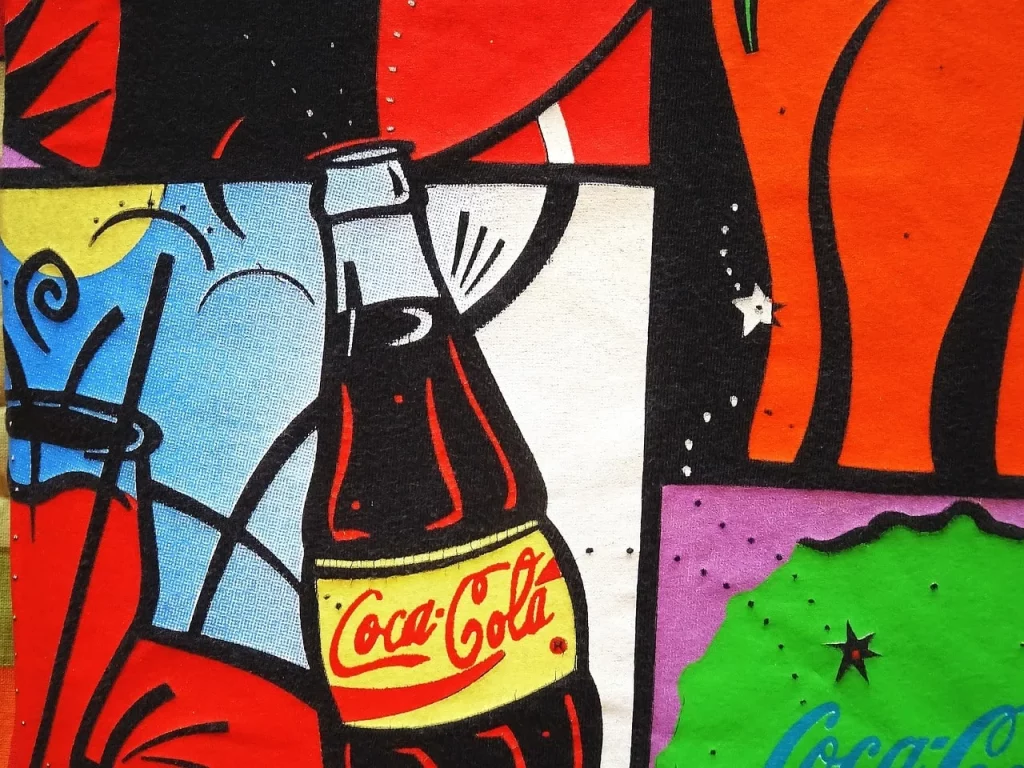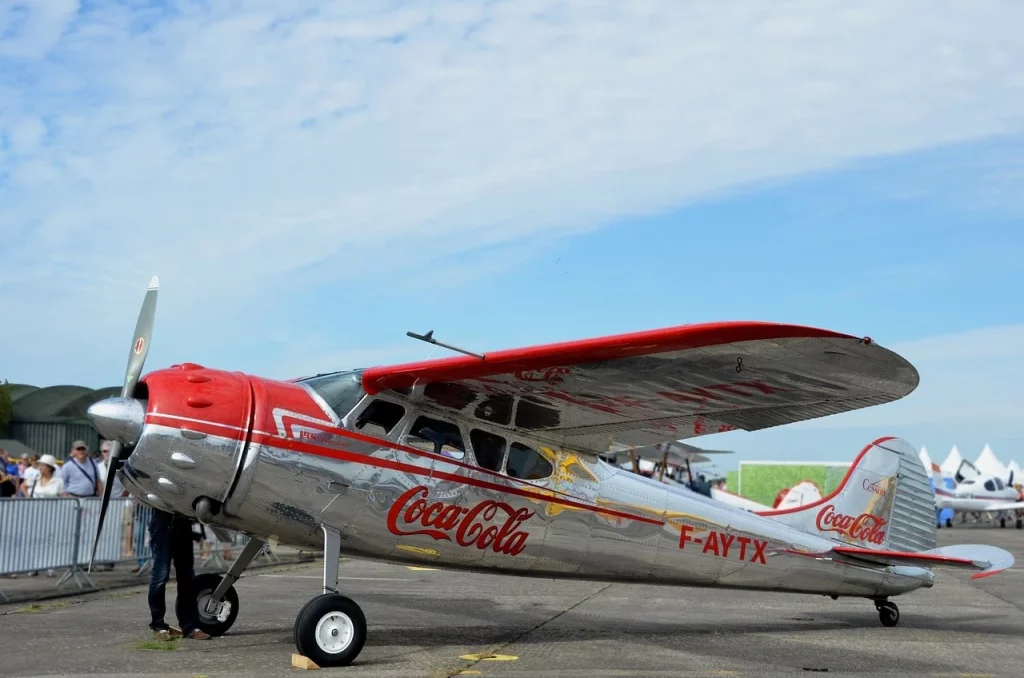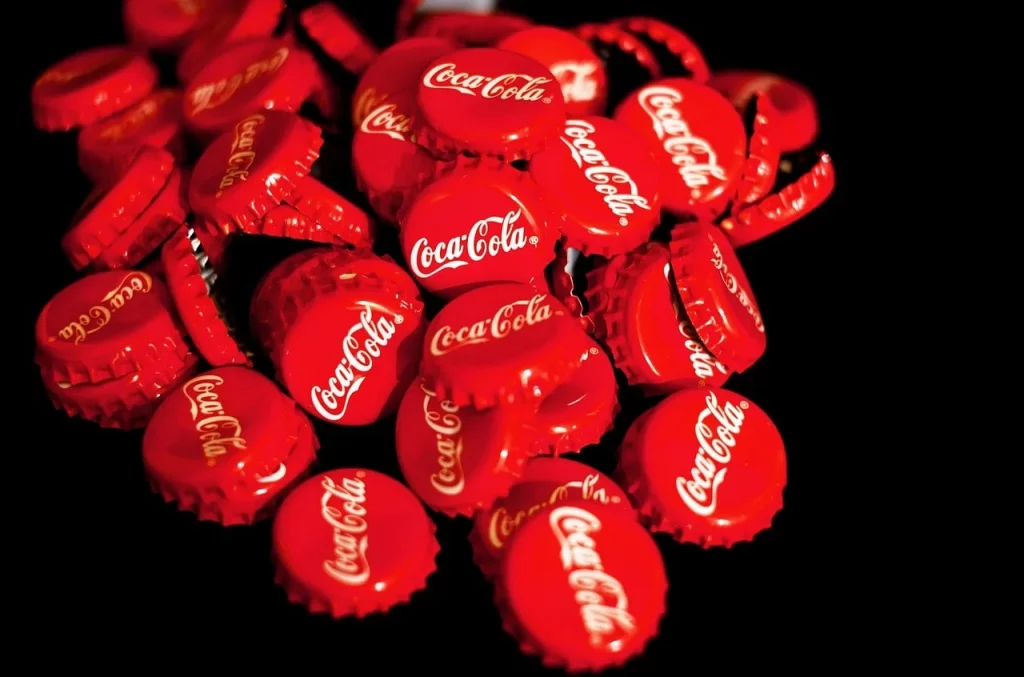Welcome to the fascinating universe of Coca-Cola, where every sip tells a story and every burp is a historical echo. Yes, you read that right. Even a burp can be monumental when it’s powered by Coca-Cola. This beverage has been a fixture in fridges and on dining tables for over a century, evolving from a medicinal potion to a global phenomenon.
In this blog, we’re popping the cap on some sparkling facts about Coca-Cola. Are you ready to discover which fact will make you the life of the party at your next gathering?
Coca-Cola is the only thing that ever soothed my throat.
Frank Sinatra
Coca Cola Facts
Explore the captivating facts behind Coca-Cola’s legendary journey. Keep your wits about you, as there’s a quiz at the end eager to test whether you’ve got the expertise of a true Coke lover.
- John Stith Pemberton’s original creation in 1886 was a coca wine known as “Pemberton’s French Wine Coca.”
- It was first sold as a remedy for exhaustion, lacking any fizz.
- The distinctive bottle design was trademarked in 1915 to ensure it could be identified by touch or sight when shattered or in the dark.
- In 1950, it became the first product to be on the cover of Time magazine.
- Its logo, in red and white, is recognized by 94% of the planet’s populace.
- Coca-Cola pioneered the use of coupons for marketing purposes.
- A select few employees guard the “Merchandise 7X” secret recipe in a secure vault.
- This brand made history as the first soda to be enjoyed in outer space, cementing its universal appeal.
- With over 3,500 beverage options and 500 different brands, the company has a vast portfolio.
- Every second, more than 10,000 drinks from this brand are consumed globally.
- In 1929, it introduced the memorable phrase “The Pause That Refreshes.”
- The release of New Coke in 1985 saw a public uproar, leading to the original formula’s quick comeback as “Coca-Cola Classic.”
- Tab, its inaugural diet soda, hit the market in 1963.

- To support troops in World War II, it pledged to supply each serviceman with a bottle for five cents, necessitating the setup of bottling facilities near the frontlines.
- Personalizing bottles with names through the “Share a Coke” campaign significantly lifted sales.
- Its expansive distribution system is also utilized for delivering medical supplies to inaccessible areas for humanitarian efforts.
- The Coca-Cola Christmas truck, born from a TV ad, has turned into an endearing sign of the holiday season.
- In 1933, the company declined an offer to buy Pepsi-Cola.
- As one of the world’s top plastic polluters, it aims to recycle each bottle by 2030.
- Until 1955, it exclusively sold its beverages in glass bottles before introducing aluminum cans.
- “Coca-Cola BlāK,” a coffee-flavored drink, was launched in 2006 to target morning consumers but was eventually phased out.
- Its vending machines are programmed to dispense drinks at a precise temperature for the best taste.
- The “Hilltop” ad’s creation was spurred by a genuine moment of connection during a flight delay, featuring the catchy “I’d Like to Buy the World a Coke.”
- Acknowledging consumer preference shifts, the brand’s portfolio includes water, juices, and teas beyond just sodas.
- In some East Asian markets, a green tea-flavored variant is available.
- Its glass bottles’ unique “Georgia Green” pigment is trademarked.
- Establishing the Coca-Cola Foundation in 1984, it was an early adopter of corporate philanthropy.
- North Korea and Cuba are the only two countries where its products are not officially sold.

- Disney parks exclusively offer this brand, thanks to a special agreement.
- The slogan “It’s the Real Thing” from 1969 has been featured in both pop art and songs due to its popularity.
- The drink’s ingredients are globally sourced, including coca leaves processed specifically in New Jersey.
- It has committed to an extensive water replenishment program, aiming to return all the water it uses back to nature.
- Pharmacist Asa Candler’s acquisition of the formula and brand for $2,300 in 1889 turned it into the global powerhouse it is today.
- Originally containing cocaine from coca leaf extracts, the beverage was green and underwent a formula change in 1929.
- Its advertisements featuring Santa Claus have significantly influenced the modern image of the jolly, red-suited Christmas icon.
- A wide range of collectible items, including ornaments, glasses, and bottles, have been produced by the company.
- In Belgium, a 2019 recycling initiative transformed its billboard into reusable bags.
- The company’s headquarters were among the first to install an automated telephone system in Atlanta.

- The “Dynamic Ribbon” design element uniquely symbolizes the bottle’s silhouette.
- A clear version, “White Coke,” was crafted for a Soviet Marshal who needed it to look like vodka while enjoying the familiar taste.
- During the Cold War, it uniquely sold cold packaged drinks in the Soviet Union.
- The recipe’s secrecy is so intense that it’s rumored to be transferred orally among a tight-knit group, never written down.
- With over 100,000 memorabilia items, its archives are among the most extensive corporate collections.
- Operating the world’s largest beverage distribution system, it serves more than 200 countries.
- Its winter ads have made polar bears an iconic part of its brand identity.
- Responding to obesity concerns, it now offers a variety of low and no-calorie drink options.
- The company once ventured into the entertainment industry by owning Columbia Pictures before selling it to Sony in 1989.
- Its franchise distribution system allows local entrepreneurs to run their own bottling operations worldwide.
- The “I’d Like to Teach the World to Sing” ad song became so beloved that The New Seekers released it as a successful single.
- In an innovative approach to sustainability, the brand has explored the use of plant-based materials for its bottles, aiming to reduce reliance on fossil fuels and decrease its carbon footprint.
Coca Cola Myths

So, you’ve learned the facts about this iconic drink, but what about the whispers and rumors? Buckle up, because we’re diving into the world of Coca-Cola myths! Get ready to separate the truth from urban legends.
- Coca-Cola Contains Cocaine
It’s true that the original formula, created in the 19th century, contained coca leaf extract, from which cocaine is derived. However, since 1929, a cocaine-free coca leaf extract has been used, ensuring that the beverage is completely cocaine-free today. - Coca-Cola Can Dissolve Teeth Overnight
While it does contain acidic ingredients such as phosphoric acid, it’s highly unlikely to dissolve a tooth overnight. Regular dental hygiene is considered more impactful on tooth enamel than the occasional consumption of acidic beverages. - Coca-Cola Used to Be Green
This myth is quite popular but entirely false. It has always been the same familiar caramel color since its inception. The myth of green Coca-Cola likely stems from its original glass bottles, which may have had a greenish tint. - Coca-Cola is an Effective Rust Remover
Due to its acidic properties, it can help loosen rust, making it easier to scrub off. However, it is not as effective as specialized rust removal products. It’s more of a handy trick than a professional solution. - Coca-Cola’s Secret Formula is Known Only by Two People
The exact details of the secret formula are closely guarded, but this dramatization is more myth than fact. It’s stored in a high-security vault, and while the recipe is a closely held trade secret, the idea that only two people know it is an exaggeration for effect.
No products found.
Coca Cola Quotes

I hope you are enjoying our journey so far. Below, you will find some of my favorite quotes. Feel free to share yours in the comments so I can add them to the list.
Coca-Cola is the essence of capitalism.
Andy Warhol
Andy Warhol, a leading figure in the visual art movement known as pop art, described Coca-Cola as a symbol of capitalism, reflecting on how the beverage stands as a universal icon transcending social and economic boundaries.
There’s nothing like a Coca-Cola to refresh you in the middle of the day.
Lee Iacocca
Lee Iacocca, an influential American automobile executive, praised Coca-Cola for its refreshing quality, emphasizing its ability to rejuvenate during a busy day, a testament to its widespread appeal and effectiveness.
Coca-Cola is the music everyone can hear.
Ken Stewart
Ken Stewart, the creator of the famous Coca-Cola Polar Bears campaign, likened Coca-Cola to universal music that everyone can appreciate, highlighting the brand’s unique ability to connect with people across different cultures and backgrounds.
Coca-Cola is a reminder of my youth.
Elizabeth Taylor
Elizabeth Taylor, a British-American actress known for her beauty and acting prowess, reminisced about Coca-Cola as a symbol of her youth, showcasing the beverage’s role in evoking nostalgic memories.
Coca-Cola represents the American Dream in a bottle.
Don Keough
Don Keough, a former president of The Coca-Cola Company, characterized Coca-Cola as a manifestation of the American Dream, encapsulated within a bottle, illustrating the brand’s embodiment of opportunity, optimism, and the pursuit of happiness.
Coca Cola FAQ

We are close to the final section, which is the quiz. Till then, read carefully these FAQs to have a higher chance of aceing it.
- What does Coca-Cola do to your body?
Like other sugary sodas, it can have various effects on the body. Immediately after consumption, it might cause a spike in blood sugar levels due to its high sugar content. Over time, frequent consumption can lead to weight gain, an increased risk of type 2 diabetes, and dental issues such as tooth decay and erosion due to its acidity and sugar content. - Can Coca-Cola cause diarrhea?
While the information reviewed didn’t specifically link it to diarrhea, beverages with high sugar content can sometimes lead to gastrointestinal discomfort or exacerbate conditions that cause diarrhea. It’s important to consume it in moderation and be mindful of how your body reacts. - Are Coca-Cola bottles worth anything?
The value of Coca-Cola bottles can vary widely based on age, condition, rarity, and specific editions. Collectors often seek out older or unique bottles, and some can be worth a considerable amount. The context of collecting suggests that while not all bottles are valuable, certain ones can indeed be collector’s items worth more than their original price. - How was Coca-Cola invented?
It was invented by Dr. John S. Pemberton in 1886 as a medicinal tonic. Pemberton, a pharmacist, developed a syrup to treat headaches and act as a stimulant. The original formula contained coca leaves (and thus a trace of cocaine, which was legal and common in medicines at the time) and kola nuts, providing caffeine. It was first sold at a local pharmacy in Atlanta, Georgia, and has since evolved into one of the world’s most recognizable beverages. - Can Coca-Cola kill you?
Like any food or drink, it is safe in moderation; excessive consumption can lead to serious health issues, including an increased risk of obesity, diabetes, and cardiovascular disease, and potentially shorten lifespan due to its high sugar and calorie content. There is no direct evidence that Coca-Cola can cause immediate death in healthy individuals, but long-term excessive intake can certainly contribute to conditions that shorten life expectancy.
No products found.
Coca Cola Trivia

Welcome to the Coca-Cola Quiz, where your knowledge is put to the test! Fail to pop open the right answers, and you might just find your soda preferences mysteriously shifting to plain water overnight.
Conclusion
Reflecting on Coca-Cola’s story, it’s like unboxing a treasure chest of moments and milestones that highlight its journey from a patent medicine to a global juggernaut. This beverage has not only quenched thirsts but also captured hearts, making it more than just a drink—it’s a cultural icon.
Its secret formula, much like the magic in everyday moments, reminds us of the simple pleasures in life. It has indeed mastered the art of creating joy in a bottle, proving that some recipes transcend taste to touch lives. Till next time, stay curious. Cheers.
1 Source Used For This Article

